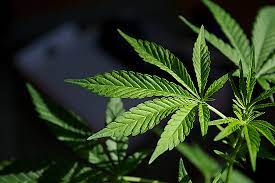The Ultimate Guide to Cleavers Leaves
Cleavers, scientifically known as Galium aparine, are a herbaceous, annual plant native to Europe and parts of Asia, and have since been introduced to other regions across the world. They are commonly found in hedgerows, woodlands, and disturbed areas, often growing as a sprawling, clinging plant with small, white, star-shaped flowers. One of the most distinctive and useful parts of the cleavers plant is its leaves. In this ultimate guide, we will explore the many facets of cleavers leaves, including their identification, medicinal uses, culinary applications, and potential side effects.
1. Identifying Cleavers Leaves
Cleavers leaves have some distinct characteristics that aid in their identification:
- Leaf Arrangement: The leaves of the cleavers plant are arranged in whorls, typically with six to eight leaves in each whorl. This means that several leaves sprout from the same point around the stem, forming a circle or a “whorl.”
- Leaf Shape: The leaves are lance-shaped, narrow, and pointed, with tiny hairs along the edges and the midrib.
- Texture: Cleavers leaves have a slightly rough texture due to the presence of small, hooked hairs. These tiny hooks allow the plant to attach itself to surfaces, giving it the ability to climb and cling to other plants or structures.
- Color: The leaves are a vibrant green color, which can vary slightly depending on the age of the plant and its growing conditions.
2. Medicinal Uses of Cleavers Leaves
Cleavers leaves have a long history of medicinal use, dating back centuries. The plant contains various bioactive compounds that contribute to its therapeutic properties, making it a valuable herb in traditional medicine. Some common medicinal uses of cleavers leaves include:
- Lymphatic System Support: Cleavers is renowned for its lymphatic system support. It is believed to stimulate and cleanse the lymphatic system, which plays a crucial role in maintaining a healthy immune system and removing toxins from the body.
- Diuretic Properties: Cleavers leaves are known to have diuretic properties, promoting increased urine production and helping to flush out waste and excess fluids from the body.
- Skin Health: Cleavers has been used topically to address skin issues like rashes, eczema, and minor wounds due to its soothing and anti-inflammatory properties.
- Urinary Tract Support: The diuretic nature of cleavers also makes it beneficial for supporting urinary tract health and possibly reducing the risk of urinary tract infections.
- Anti-inflammatory Effects: The presence of certain compounds in cleavers leaves provides mild anti-inflammatory effects, which may be helpful in managing minor inflammatory conditions.
3. Culinary Applications
While cleavers leaves are primarily known for their medicinal uses, they can also be utilized in culinary applications, although not as commonly as other culinary herbs. The leaves have a mild flavor with a slight hint of freshness. Some ways to incorporate cleavers leaves into your dishes include:
- Salads: Young cleavers leaves can be added to salads to provide a refreshing and unique touch. They can be combined with other salad greens or used as a garnish.
- Teas: Dried cleavers leaves can be used to prepare herbal teas. Simply steep a few leaves in hot water for a soothing and refreshing beverage.
- Infused Water: Fresh cleavers leaves can be added to cold water and infused overnight for a subtle, refreshing taste.
- Cooked Dishes: In some traditional recipes, cleavers leaves have been used as a pot herb, adding them to soups, stews, or cooked vegetable dishes.
4. Potential Side Effects and Precautions
Although cleavers leaves are generally safe for most people when used in moderation, some individuals may experience mild side effects. These may include gastrointestinal discomfort or skin irritation in sensitive individuals. It’s essential to avoid excessive consumption of cleavers leaves and consult with a healthcare professional before using them medicinally, especially if you are pregnant, breastfeeding, or taking medications.
Conclusion
Cleavers leaves are an intriguing and versatile part of the cleavers plant. With their unique appearance and medicinal properties, they have earned a place in traditional medicine as a valuable herb for supporting the lymphatic system, promoting urinary health, and providing mild anti-inflammatory effects. While less common in culinary practices, cleavers leaves can still be used creatively to add a fresh touch to salads, teas, and infused water. As with any herbal remedy, it’s crucial to use cleavers leaves responsibly and seek professional advice when needed to ensure safe and optimal use.



